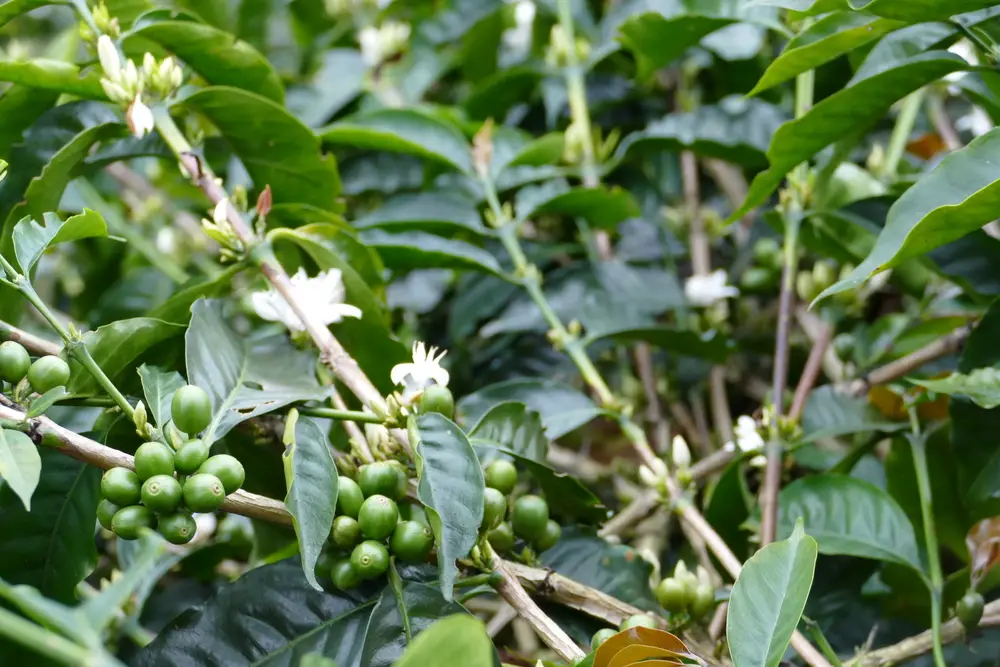To the genus Arabica, Catimor coffee is one of the highest yielding and easiest to grow coffee varieties. If you are a lover of subtle coffee aromas then Catimor is an undeniable choice.
Find out more about this type of coffee, which is widespread in China, in the blog below.
Table of Contents
Features of Emerald Catimor coffee from China
- The name Catimor comes from the variety that is mainly grown in the region. The area is known as “The Emerald Flow” due to the flora of the region.
- Emerald Catimor is grown in Meng Lian, in the Chinese province of Yunnan, which has a climate comparable to that of Colombia and Indonesia and is known for its fruity-flavored coffee and fine cup.
- grown between 1,400 and 1,800 meters above sea level on the fertile slopes of the Palian mountain.
- It is mainly grown by the Lahu people, an ancient ethnic minority group in southern China, and has been their main source of income for the past 20 years.
- Catimor China Emerald is ideal for espresso-based coffee, especially lungo or espresso.
The washing process
When washing, it is important that every phase of growing, harvesting and fermentation goes right, because the taste depends entirely on whether the bean has absorbed enough nutrients and sugars during its growth. This works well for coffee grown in China’s Yunnan region, where the rainfall, elevation, and humidity are ideal for growing coffee.
The process begins with the pulping of the coffee cherries, leaving the mucilage intact for fermentation. The fermentation process can last anywhere from 1 to 4 days, giving the bacteria in the fermentation tank time to break down the slime, which is then “washed” at the end of the fermentation. After the mucilage has been removed, the coffee is carefully dried in the sun. In the full wash, the beans are usually soaked twice, which is also known as double washing.
Tasting notes
Emerald Catimor coffee is described as a clean, sweet coffee with flavors of milk chocolate and malt, with a medium body and good acidity.
Lahu village
The Lahu are one of China’s ancient minorities with a population of less than half a million. Once prized as hunters, they have become farmers, and much of the success of China’s burgeoning coffee industry can be attributed to their hard work.
In the last 15 years, Lahu farmers have received increased support in the form of processing and cultivation techniques, advice from foreign producers and market information.
Coffee Catimor
Catimor is a small plant with large, broad leaves and bright red berries. She is valued for her fast production and high yields, as well as her natural resistance to pests and leaf rust.
The Catimor variety needs to be well cared for to ensure high in-cup quality, as poor growing conditions can have a very negative impact on the in-cup flavor profile. A good cup quality However, Catimor develops a complex cup.
History of the Catimor coffee beans
This type of coffee bean was first grown in a laboratory by Portuguese agricultural experts in the mid-20th century. The aim was to create a high-yielding and easy-care variety of coffee beans. It is a blend of Timor (Robusta) and Caturra (Arabica) coffee.
Catimor was first introduced in Brazil in 1970, but soon spread throughout Latin America as professionals sought high-yielding coffee varieties.
Today Catimor is widespread in Asia. However, after the coffee rust problem in Central America, cultivation is also spreading to the higher elevations of countries like Peru and Mexico.
the Catimor coffee obtained the characteristics of both plants, in particular the resistance to coffee rust and a compact size, which greatly simplified large-scale cultivation. It was these hardy traits that first drew coffee growers to the strain.
It is important to know that Catimor tends to be short-lived due to the high energy required to produce high yields. In Indonesia, for example, a typical Catimor plant has a lifespan of just ten years.
Dispute over Catimor coffee
On one side of the family tree is Caturra, Brazil’s treasured natural bourbon mutation. On the other hand is Timor Hybrid (or “Tim Tim”), the somewhat bizarre result of the only known natural interbreeding of a Canephora (Robusta) plant with an Arabica plant that occurred on the Southeast Asian island of Timor in the early 20th century.
The ” Robusta flavor” has led some to dismiss Catimor as a potential specialty coffee variety. This claim has some merit when grown in parts of the world other than Asia. Such is Brazil’s ill-fated experiments with Catimor in the 1970s Years ago, when the quality of these plants was compromised by the ideal conditions for growing Arabica.
Catimor seems to work best when grown at elevations below 1,650 meters above sea level, where there is more rainfall.
The Katimor myth
While Catimor has lived up to its commercial promise (high yield and low maintenance) to some extent, it is viewed with suspicion due to frequently cited pot quality issues. This has led to Catimor being neglected as a specialty coffee.
China committed to good Catimor cultivation, and five years later, Chinese coffee (which is 99% Catimor) began to be recognized as an emerging specialty coffee.
Conclusion
Many independent cuppings will show that Catimor can produce an excellent aroma.
From the roaster’s point of view, the end flavor can often be very sour with a pleasantly sweet aftertaste that closely resembles that of bourbon. But with a little experimentation, there is much more that can be gleaned from this intriguing and alluring strain grown in Southeast Asia: deep, complex aromas of brown sugar, vanilla, strawberry, and spice.



